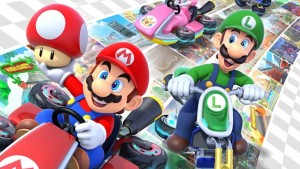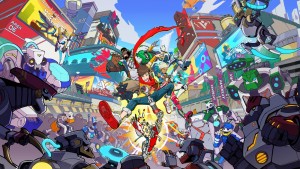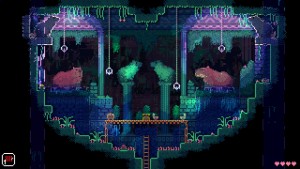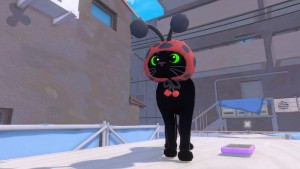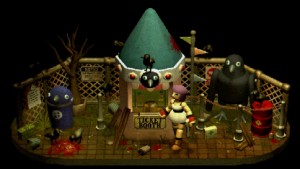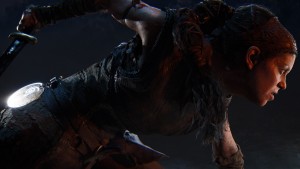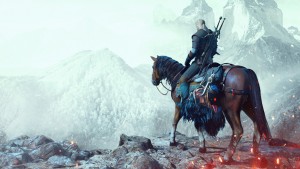Please support Game Informer. Print magazine subscriptions are less than $2 per issue
Marvel vs. Capcom: Infinite
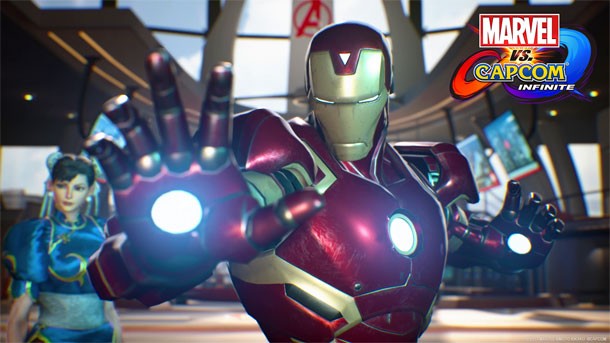
With Marvel Vs. Capcom: Infinite a month away, we still have a few questions about how the final product will come together. How big will the final character roster be? Is the story mode demo (which didn’t exactly wow us) be indicative of the final product? What will the other single-player modes look like?
Capcom recently let us a play a build of Infinite with a longer look at Story mode, as well as access to its Mission, Training, and Collection modes (the arcade mode was not available). After spending a few hours tinkering around with the entire 30-character roster and seeing more of the story mode, we have a better idea of what the final product will be.
The story mode still emphasizes plot over characters
Capcom has been selling Infinite’s story mode as a substantial improvement from past entries, and as part of Marvel’s effort to improve the quality of the storytelling in Marvel-branded games as a whole. Though the plot is a little more concrete this time around, the emphasis on plot points in the section we played overshadowed the potential for interesting character moments.
The section we were shown began with Marvel and Capcom’s finest arguing over whether releasing Thanos (who the crew had recovered from his cell in Ultron Sigma’s lair in a previous story demo) from his galactic bindings (but not his cage) is worth the information he might have to offer. We get a get an incredibly condensed version of Marvel’s Civil War scenario, as Tony Stark (and Chun-Li) fight Captain America and Dante over the matter.

These scenes have potential to offer the cool moments a crossover like Infinite promises, but they’re still missing the components that make a story more than a plot. Voice acting and facial animations are still stiff, and while characters have a little more to say to each other this time around beyond their direct intentions, their personalities don’t shine through as much as they could. The dialogue is littered with lore and references (when Thor revels in the chance to revive the fallen soldiers taken over by the Ultron Sigma virus which corrupted them, Chris remarks that reviving the dead usually doesn’t go to well), but I never got the sense that these characters exist outside of this particular story.
A scene at an A.I.M.Brella (a fusion of A.I.M. from the Marvel universe and Umbrella from the Resident Evil universe) facility goes for a more humorous tone with Frank West, Spider-Man, Mike Haggar, Chris, and M.O.D.O.K. coming across each other, but again falls flat. At one point, M.O.D.O.K. asserts the good guys will never take his Infinity Stone, only for Spider-Man to immediately pluck it out of his oversized headpiece using his web. It’s a decent joke, but timing and delivery are everything in comedy, and the lack of a solid delivery, as well as the brisk pace at which every moment moves makes it difficult for any joke to land.
I like watching these characters in action, and I’d be lying if I said I didn’t want Hulk to throw a Fastball Special using Ryu instead of Wolverine. But these moments aren’t enough to compel me to want to learn more. The story might still come together in an interesting way, but I’m hoping later scenes flesh these characters out more than what I’ve seen so far.
The story mode will feature characters outside of the initial roster
Although the emphasis is definitely still on the 30 characters who will make up the game’s initial roster, we will definitely see characters outside of it. An earlier story trailer showed off Strider’s Grandmaster Meio, Mega Man’s Dr. Light had a few lines in the section we played, and though M.O.D.O.K. isn’t playable this time around, he still featured prominently in one story mode scene.
I also saw one interesting scene in Valkanda between Ryu, The Hulk, and Black Panther, the latter of which holds an Infinity Stone. They’re joined by a monster hunter in what looks like a Rathalos armor set. The character was part of a roster leak earlier in the year, but when I asked Capcom about her potential inclusion as DLC, they said they had nothing to announce.
Fights may have more variety than other story modes
The Valkanda segment features the same fights against Ultron’s minions players of the previous story mode demo might be familiar with, with a slight twist: If I wasn’t able to kill them before a certain amount of time, they would fly off into the background, dealing damage to Valkanda and if the city is destroyed, then you have to start over. Though I was able to easily dispatch most of the baddies, I did play with a bit more urgency, making a beeline for enemies who looked they were about to fly away.

Training and Collecton modes are exactly what you’d expect
We were also shown two other components of Infinite’s single-player: Training and Mission Mode. Training mode has all of the standard bells and whistles you’d expect, such as being able to restart your session on any side of the stage, mucking with all the meters on screen, and getting the chance to learn combos to your heart’s content. I wasn’t able to test whether settings in one session would stay that way during another (a problem Street Fighter V’s had until recently), but as a whole, it looks completely serviceable.
The collection mode acts as a gallery of character data, letting you browse cutscenes, character art, and even voice samples at your leisure. This, more than the story mode, had me waxing nostalgic about how iconic, cool, and interesting some of these characters are, and having all these snippets to pour over is a nice touch, especially for archivists.
Mission mode is a great introduction to the combo system and characters
Mission mode also remains mostly the same as its Ultimate Marvel Vs. Capcom 3 iteration, though sticking to the same 10-trials-per-character format with Infinite's revamped combo system raises a few questions. Though the first few trials are more tutorial than anything (asking you to simply perform a character’s special moves), later combos ask you to switch to a second, predetermined character mid-combo.
Though this takes away learning the bread-and-butter combos of a given character, it emphasizes how customized all the combos you learn in Infinite will be, since any two characters will have bespoke combos only they can do. Other combos ask you to use a specific Infinity Stone’s Surge and Storm abilities, which again speaks to how malleable the combo system is. Mission Mode looks to be more of a taste of what you can do with the combo system (by hinting at what hit in one character’s combo provide the best time to switch) than guide to what you should be doing with it. Though the early trials feel like filler, this is a smart approach, and I left the Mission Mode eager to dive deeper into what each character is capable of.
My time with Infinite gave me a better idea of what the final game will be, but it didn’t do much to change my overall impression of it thus far: The combo system is incredibly diverse and customizable, and the Mission mode really makes this shine through. However, the character of the game isn’t quite where it needs to be, and I’m hoping the rest of the story mode will live up the promise of what a crossover like this should be come September.


